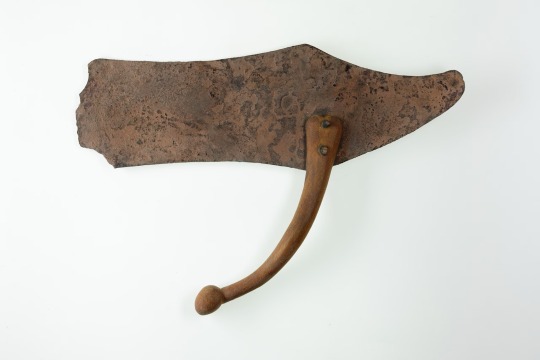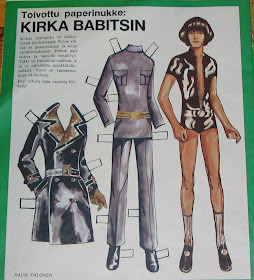#Weirder History
Text

Alexander the Great's surprising battlefield decision proved pivotal for facial hair norms that lasted hundreds of years. Photograph By Bridgeman Images
Beards and Mustaches Have a Weirder History Than You Think
No-Shave November may be a modern phenomenon. But our love-hate relationship with beards and mustaches dates back to the days of Alexander the Great.
— By Dina Fine Maron | November 7, 2023
More than 2,000 years ago, as Alexander the Great’s troops prepared for a pivotal battle over Asia, the famous Macedonian commander learned that his troops were outnumbered by at least five to one. To help assuage some of his force’s anxiety, Alexander issued an unusual order—his troops needed to shave. Why? It was too easy, he said, for their foes to grab Macedonian beards.
The move, coupled with Alexander’s surprising success on the battlefield, fueled a trend in beardlessness among Greek and Roman men that endured for the next 400 years, according to historian Christopher Oldstone-Moore, who wrote the 2015 book Of Beards and Men: the Revealing History of Facial Hair.

This tweezer-razor made of bronze or copper alloy and crafted more than 3,000 years ago in Egypt, was found in a coffin in the tomb of Neferkhawet, a scribe who lived around 1500 B.C.

The razor of Amenemhat, the father of Neferkhawet, made of similar materials, was found in the same tomb in the mid-1930s. Photographs By The Metropolitan Museum of Art, New York, Rogers Fund, 1935
Alexander’s wartime decision was really a turning point for facial hair, says Oldstone-Moore, who is himself currently clean-shaven. “The history of men is literally written on their faces,” he writes in his book. Indeed, long before modern movements like No-Shave November or Movember were founded to raise awareness for cancer research and other causes, trends in men’s facial hair have waxed and waned alongside the societal significance of being clean-shaven, whiskered, or mustachioed. Men’s personal grooming, according to historical books and peer-reviewed studies, extends across art, politics, and even into the court room. Much of that work to date focuses on European and American trends, though beard choices have long been meaningful to communities and religions around the world, signaling, among other things, religious piety for Muslims and Jews.
Shaving facial hair dates as far back as the Sumerians and Egyptians, who used razors made of copper or bronze. Generally, however, most men in ancient times favored beards and it was considered arduous and sometimes also unsafe to shave. Still, for most men it wasn’t about being “too lazy to shave,” either then or now, says Oldstone-Moore, an emeritus lecturer at Wright State University, in Ohio. “Fashionable men would still have to go to barbers and have their beards cared for properly, and they’d have oils and combs and that sort of thing.”
The Regal Power of Facial Hair
Facial hair has often been equated with masculinity and related patriarchal power, but that hirsute power is sometimes transferrable: Notably, Pharaoh Hatshepsut (ca 1508– 1458 B.C.) donned an artificial beard when she ruled Egypt for more than two decades. Egyptian kings had previously fashioned themselves in stylized ways, with wigs and crowns and artificial decorative beards, Oldstone-Moore notes, so Hatshepsut’s beard was aligned with her predecessors’ sartorial customs.

Hatshepsut (ca 1508– 1458 B.C.) wore an artificial beard when she ruled Egypt, but her male predecessors had already normalized wearing decorative beards. Photograph By Rogers Fund, 1931, The Metropolitan Museum of Art, New York
Beards were later of such import that Shakespeare explicitly mentions them in all but four of his plays, notes historian Will Fisher in the journal Renaissance Quarterly in 2001. Moreover, he writes, analysis of a collection of about 300 portraits of European men from the 1500s and 1600s indicates that for every portrait of a man without a beard, there were about 10 portraits of men with beards. Styles of the time included the thin, angular “stiletto,” a fuller “square cut,” and even a double-tufted “swallowtail.”
Can Facial Hair Make You Sick?
Ideas about the significance of men’s beards have made it into medical books. Growth of facial hair, Renaissance physicians wrote, was explicitly tied to the production of semen, an idea presaged by classical Greek scientists who theorized that men have “vital heat” which explains their size, strength, and hairiness. According to this false theory, both sexes produce this vital heat, which then gives rise to semen, yet women’s bodies aren’t equipped to handle significant amounts of it.
By this way of thinking, Oldstone-Moore writes, only a man’s body could survive growing a beard. In classical Greece, people believed if a post-menopausal woman grew some facial hair, sickened, and eventually died, she simply had an unnatural buildup of semen, and facial hair was a symptom of that underlying issue.
Adding another layer to that theory, German abbess Hildegard of Bingen, around the year 1160, offered that the reason facial hair occurred exclusively around the mouth—rather than, say, on the forehead—was because of men’s hot breath. Women, according to Hildegard’s writings, wouldn’t have breath that was as hot as a man’s because men were formed from the “earth,” whereas females were formed from men, she then explained, tying her thinking back to creation ideology.
By the 1700s, when shaving once again became de rigeur and it was considered respectable and gentlemanly to shave, the phrase “clean-shaven” took hold. In the nineteenth century, Louis Pasteur’s germ theory also further shored up medical support for shaving: Facial hair, doctors warned, was a microbe haven. Indeed, one French scientist noted in a 1907 experiment that the lips of a woman kissed by a mustached man were “polluted with tuberculosis and diphtheria bacteria, as well as food particles and a hair from a spider’s leg.” A study in the Lancet around that same time also concluded that shaven men were less likely to develop colds. The work argued that soap could be more effective on a hairless face, according to Oldstone-Moore.

King C. Gillette patented his famous safety razor in the U.S. in 1904. Employers at the turn of the century expected their workers to be clean-shaven. Photograph By Bettmann, Getty Images

This Gillette safety razor, photographed with its original box, was from the 1930s, when shaving cream and equipment fueled millions of dollars in sales in the United States annually. Photograph By Science & Society Picture Library , Getty Images
Workplace Norms and Controversies
Workplaces in the early 1900s and onward also regulated facial hair and instituted requirements for its male workforce to shave as a key sign of professionalism and cleanliness. Relatedly, in 1904, King C. Gillette patented his safety razor in the U.S. and by 1937, Oldstone-Moore writes, shaving cream and related accessories had estimated sales of $80 million in the U.S. alone. (Related: See these world beard and mustache champion photos.)
Facial hair controversies also rose to the highest court in the land: A U.S. Supreme Court case in 1976, Kelley v. Johnson, even upheld an employers’ authority to dictate grooming standards for their employees. In that case, policemen of Suffolk County, New York, had taken issue with workplace standards that barred them from growing hair below their collars or facial hair except for a neatly trimmed mustache that didn’t extend onto the lip. The county successfully argued that these grooming regulations made police recognizable to the public and contributed to the cohesiveness of the force. In the years that followed, that case precedent was further applied to school employees and other workers across the country.
More than a dozen years after the Supreme Court ruling, in 1992, Massachusetts police officers pushed back against a statewide ban on facial hair among its officers. They, too, lost.
In more recent years, however, despite those standing court rulings, western facial hair norms have shifted, and employers have largely pulled back from stringent regulations, at least informally.
“Beards or facial hair of some sort often come back when gender or masculinity are being somehow debated,” says Alun Withey, a historian at the U.K.’s University of Exeter and author of the 2021 book Concerning Beards: Facial Hair, Health and Practice in Britain, 1650-1900. “Today there are multiple debates and challenges surrounding concepts of gender and the body, so perhaps the recent beard trends in part reflect this,” he says.
With increased facial freedom, a variety of personal grooming choices have now taken hold. But purveyors of men’s shaving and personal grooming equipment are not hurting—market analysis from June 2022 indicates that instead of razors, men are now instead investing more in electric trimmers.
0 notes
Photo

Weirder Things (coming to Watcher 2023)
#/j#puppet history#watcher#ryan bergara#weirder things and goncharov two lost masterpieces of modern cinema
2K notes
·
View notes
Text


out here fulfilling impulse’s notoriety needs
#just stream things#impulsesv#bdubs#double life smp#trafficblr#mcyt#i tried to find an actual magazine cover but i had to stop before my search history got any weirder than it is
370 notes
·
View notes
Note
hi sir can you PLEASE elaborate on Horse With Toes™️ thank you
yeah uh caesar’s horse had toes apparently

(from suetonius: the lives of the caesars)

and thanks to some very literal interpretations of these infamously dubious sources we now have this image which haunts my dreams semi-regularly

#and you want to know something. there are weirder famous horses from ancient history than this one#notably alexander the great’s horse who supposedly stomped someone to death for wronging his owner and then immediately dropped dead itself#(suffice to say ancient sources are weird and you should take everything they say with a decidedly sizeable pinch of salt)
8 notes
·
View notes
Text
next ep of voyager. apparently it is now canonical that some dinosaurs secretly evolved to human levels of consciousness on earth, secretly took a spaceship to the delta quadrant where they multiplied to the point that they started looking for their ancestors' planet of origin, and then secretly invaded voyager, at which time they menaced chakotay and roasted b'elanna's flirting technique. just another day in the TWILIGHT ZONE
#this show makes me so ANGRY LIKE#these plotlines were created by a medically UNWELL PERSON#star trek#star trek voyager#st#voyager#chakotay: well obviously my lizard friend your ancestors evolved on earth on a continent that disappeared 🥰#chakotay: and then they learned how to fly to space without anyone noticing while humans were still banging rocks together 😲#chakotay: very simple really. this changes nothing about how i view my own planet and history btw. oh you're kidnapping me again oop!!#😤😤😤#I'm compelled im enraged..... how has this never come up in lower decks....#10 times weirder than threshold and i MEAN that
33 notes
·
View notes
Text
me approximately 3 days ago, deep in my goes wrong era, listening to the mischief makers pod and getting to ep 5: who the FUCK is harry kershaw
me today one full season of MMNI later: alright mischief makers pod tell me everything about my new best friend harry kershaw
#oh and side note? this podcast obliterated me#going from zero (aka barely remembering that the dude who plays chris bean is not the actual director of the show)#to 60 (knowing about his frankly questionable upbringing‚ brush with cancer‚ nursing era and illegitimate hot air ballooning activities)#was THE WILDEST hour of my life bar none#oh excuse me i forgot about his gaming and sci fi reading hobbies and his passion for medieval history#and this is ONE GUY. and they’re all so NICE#and i was FORCED to exit my goes wrong era and enter my general mischief era#who knew the only acting troupe in england with a wilder cast with weirder backstories than Cornley… is Mischief#my heroes#mischief theater#harry kershaw
18 notes
·
View notes
Text
Say what you will about conspiracy theories, they make for good pulp and sci fi stories.
#conspiracy#conspiracy theory#stories#pulp#sci fi#i mean stuff like ancient aliens#and weirder conspiracies about ancient history and prehistoric life
20 notes
·
View notes
Note
🙊 Slay the Princess
i want my eldritch goddess wife to step on me so so bad please pleas eplea lpsealespslseaslsepalealpeaessllelaepas-
(also. seriously. the best visual novels i've ever played. the voice acting haunts me with how phenomenal it was, and the artwork was so beautiful that i want to return to the game just to stare at it. the pristine cut can't come soon enough. impatiently waiting!!!! but politely!!!!!!!!)
[send me a 🙊 along with any topic of your choice and i'll tell you my honest opinion on it]
#ask#i am so down bad for the princess its not even funny i have actually never experienced the whole 'step on me' thing until i#played that game and she. well. she. uhm. uhhhhh. UHHMMM.#like for reasons that i cannot possibly explain. and that given my fandom history you'd assume have an origin in asoiaf stuff but it DOESNT#its MUCH WEIRDER THAN THAT. 'little bird' as a pet name uhm. uhmmmmm. hi miss princess lady ill be your bird.
5 notes
·
View notes
Text
i don’t know what i expected from the early access puppet history but it wasn’t ryan doing this?????
11 notes
·
View notes
Photo









Finnish weekly magazine APU used to publish famous people as paper dolls between 1968 and 1998. The dolls ranged from sports stars to royals, tv comedians, beauty queens, and of course singers, including our Eurovision representatives.
Many of the dolls were collected and printed into a book in 2008. It doesn’t include all of them, but at the end of a book there is a list of all the dolls published and after some research I managed to find pictures of all of the Eurovision dolls. I will collect each decade into a different post.
Finnish Eurovision representatives from the 1960′s, ordered by the year their dolls were published in:
1968: Kristiina Hautala (ESC 1968), also the first paper doll published in the magazine
1968: Katri Helena (ESC 1979 & 1993)
1969: Kirka Babitzin (ESC 1984)
1969: Jarkko ja Laura (ESC 1969)
1969: Päivi Paunu (ESC 1972)
1969: Fredi (ESC 1967 & 1976)
1969: Ann-Christine (ESC 1966)
1969: Lasse Mårtenson (ESC 1964)
1969: Laila Kinnunen (ESC 1961, Finland’s first ESC representative)
#just when you thought this contest can't get any weirder#Esc facts with Bie#paper dolls#paperinuket#eurovision#euroviisut#eurovision history#finland
55 notes
·
View notes
Text
how does ryan explain to the professor that the murderous holographic imposter he threw through a window held him prisoner because he wanted to skin him alive and wear his flesh to feel properly or do they just skim over that and move on with their lives
#they've seen weirder shit#i'm just saying especially because both of them were potentially about to die#so free worry about the other right there h u h#almost died though. might want to skim over that#i'd just like to imagine the conversation regardless#puppet history#the professor#ryan bergara
12 notes
·
View notes
Text
the mattson/logan parallels are infuriating and they r so real
#he's been reincarnated into a much creepier and weirder and more inscrutable guy!#but the kids don't have that level of familiarity/history/trauma w him so they treat him differently#succession
7 notes
·
View notes
Text
the Professor sure ain’t possessed or anythin
#fern.txt#puppet history#I’m like twenty minutes in and he’s acting weirder than normal#not to mention the glitching and demonic voice covering his sometimes
17 notes
·
View notes
Text
So bizarre to me that this site prides itself as being the quote unquote weird website and yet at any opportunity is like Look at this FREAK! LOL! (said freak usually being an autistic person with a “weird”/atypical interest)
#Still not over that nasty ass user that posted about someones ocs and gaped and gawked abt how they were... based around the twin towers#Like that was it. Sure its a little strange but people were like OMGGG THIS IS THE FUNNIEST THING IVE EVER SEEN!!!#Like dude the wtc was built in like the 70s there was a good 20 to 30 years of history before 9/11#Idk man i just finally reached a point where i stopped feeling so protective over my interests and identity bc of lifelong teasing like this#And now everyone is like QUICK! GO HARRASS THAT PERSON FOR BEING SLIGHTLY WEIRDER THAN ME!!! Like youre a kinnie. Glass houses#emf
12 notes
·
View notes